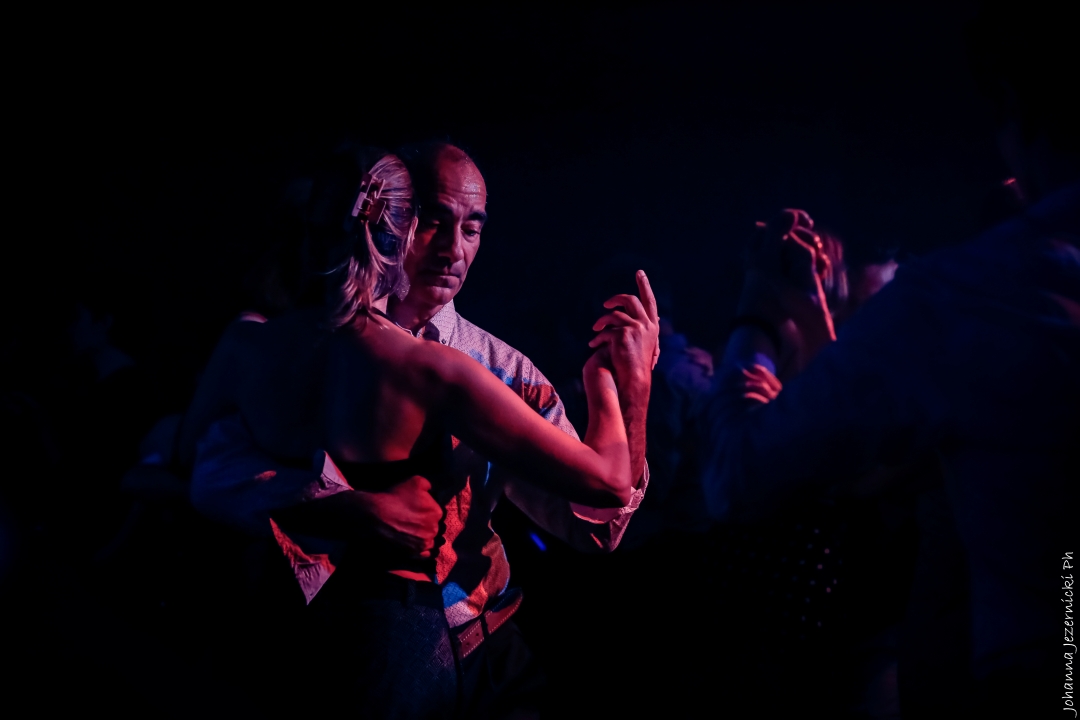Tango Etiquette
Practicas and Milongas have codigos or rules for etiquette! These are the important ones.
The Cabeceo
The cabeceo is an invitation to ask someone to dance with us. It’s typically considered rude to go up to someone and ask them to dance using speech or by extending your hand.
- A cabeceo is first initiated by making eye contact (mirada) with the person you want to ask and once you have eye contact, then nodding with your head towards the dance floor.
- They can choose to accept (by nodding up/down or towards the dance floor) or decline (by looking away, or shaking their head or their hands).
- Once the person accepts, the leader walks over to where the follower is sitting and then both people step onto the dance floor together.
- Tip for Followers: wait to get up from your seat until the leader is directly in front of you as occasionally it happens that they may have cabeceo’d with someone else next to you. This video illustrates this point.
- For examples, search “Tango cabeceo” videos on YouTube.
When the dance begins
- Never walk through the dance floor once people have started dancing. Always walk around the edge of the dance floor when walking around the room.
- When you dance with someone, you commit to finishing the tanda (the set of 4 songs) with them; please don’t end early unless you are very uncomfortable dancing with that person.
- A milonga is to enjoy dancing. It is not the place to get feedback or give feedback; that is what Practicas are for. Never give feedback or advice in a milonga.
Tip: If you’re a newbie sometimes a good strategy is to cabeceo on the third or fourth song in the tanda. You’ll find that more followers will be happy to dance with an early stage beginner for just one or two songs rather than for a whole tanda.
Check this out for the longer, comprehensive etiquette list – for both Followers and Leaders. Everyone must read this complete list.
Also, ask your teacher(s) for more information on the codigos, especially for the specific Milongas that you are interested in going to.
Note: The codigos vary by Milonga, with some being more strict than others.
Having trouble getting dances at Milongas and Practicas? Read our guide on how to get more dances.

Suggest an update to this page!
The TangoVida Guide is community-written. Submit your feedback below to help improve it. We appreciate your help.
